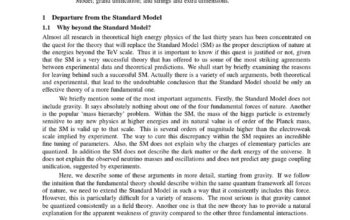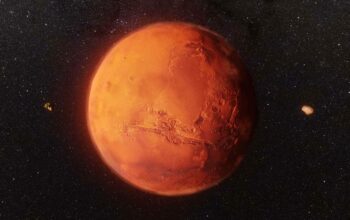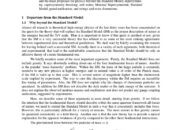Magnetism, a phenomenon often relegated to the realm of classroom experiments and everyday appliances, transcends its mundane connotations when examined on a cosmic scale. The interplay of magnetic fields at galactic levels serves not merely as a curiosity but as critical machinery in the grand design of the universe. This exploration aims to unveil the intricate tapestry of magnetism woven into the very fabric of galaxies, from their genesis to their eventual demise.
To comprehend magnetism on this vast scale, one must first appreciate the fundamental principles that govern magnetic fields. At the subatomic level, charged particles generate magnetic fields, their movements creating a dance of forces that can extend far beyond their immediate vicinity. This local phenomenon burgeons on galactic scales, wherein vast clouds of ionized gas and cosmic dust respond to the influence of both stellar and interstellar magnetic fields. The universe, in essence, resonates with the magnetic symphony of its many constituents.
The formation of galaxies begins with dark matter, an enigmatic component of the universe that pervades the cosmos. As dark matter clumps together, it forms the scaffolding upon which ordinary matter will coalesce. During this primordial phase, magnetic fields are born out of turbulence and chaotic motions, akin to how a painter’s brush strokes create texture on a canvas. Initially, these fields are weak; however, as gas begins to collapse gravitationally, magnetic forces amplify, threading their influence throughout the newly forming galaxy.
One of the most striking manifestations of cosmic magnetism can be observed in the spiral structures of galaxies, where magnetic fields delineate and enhance the complexity of galactic morphology. These fields help regulate the flow of ionized gas within the galaxy, directing the formation of new stars. Clusters of stars, analogous to grains of sand adhering to damp earth, emerge from the dense regions of the interstellar medium, nurtured by the magnetic intricacies that govern their surroundings. Such a process exemplifies not only the elegance of magnetism but also its essential role in cosmic evolution.
Moreover, the magnetic fields of galaxies are not static entities; they are dynamic, subject to the vicissitudes of galactic activity. Supernova explosions, for example, send shock waves rippling through space-time, distorting and intensifying existing magnetic fields. These incidents not only illuminate the destructive forces at play but also nurture the seeds of renewal that follow. As new stars are born, they carry with them freshly induced magnetic fields that further propagate throughout their galactic homes, ensuring a continuous cycle of rebirth and transformation.
Interestingly, studies suggest that the strength of a galaxy’s magnetic field is closely related to its rate of star formation. Galaxies that forge new stars at an accelerated pace exhibit feistier magnetic fields, akin to a wildfire consuming dry brush. This symbiotic relationship draws parallels to ecological systems on Earth, where the vitality of flora and fauna is often bound to the health of their habitats. In this way, magnetism acts as a lifeblood, sustaining the fundamental processes of cosmic architecture.
Venturing deeper into the cosmos, one encounters the fascinating concept of cosmic rays. These high-energy particles originate from various sources, including supernovae and active galactic nuclei. Their trajectories are inexorably influenced by galactic magnetic fields, which act as intricate guides that strip away their chaotic nature and impose an order upon their paths. In so doing, magnetic fields sculpt the very fabric of energetic environments, shaping the dynamic landscape of the universe.
The colossal scale of magnetism can also be discerned in the behavior of galaxy clusters. In such immense aggregations of matter, magnetic fields become pivotal in facilitating the exchange of energy and momentum across vast distances. They serve as arboreal structures, linking individual galaxies like branches of a towering oak tree, creating a network through which matter and energy flow seamlessly. This interconnectedness offers insights into the nature of dark energy and dark matter, the elusive constituents that remain at the forefront of astrophysical research.
As the universe itself evolves through epochs, so too does the role of magnetism shift. In the wake of stellar death, black holes emerge, drawing material into their gravitational embrace. The magnetic fields surrounding these astrophysical behemoths engender jets of relativistic particles that shoot outwards at nearly the speed of light. These jets, observable in various wavelengths, are testaments to the interconnected dance of magnetism and gravitational forces in the cosmos. They push back against the entropy of the universe, illuminating the shadows cast by black holes like beacons guiding weary travelers across a vast ocean.
In pondering the grandeur of magnetism on a galactic scale, one is reminded of the intricate relationships that bind not only stars and galaxies but the very essence of existence itself. Magnetism emerges as a silent architect, weaving together the threads of creation, destruction, rebirth, and transformation. The universe reveals its magnetic fields not merely as forces that govern motion but as custodians of cosmic order, orchestrating the symphony of existence.
In conclusion, magnetism in the universe is far more than a mere curiosity; it is a fundamental force that shapes galaxies and underpins the lifecycle of stars. The unfolding narrative of magnetism resonates on a galactic scale, a grand metaphor for the interplay of forces that defines our cosmos. Understanding these magnetic fields offers profound insights into the nature of the universe and our place within its vast, unfathomable expanse.












